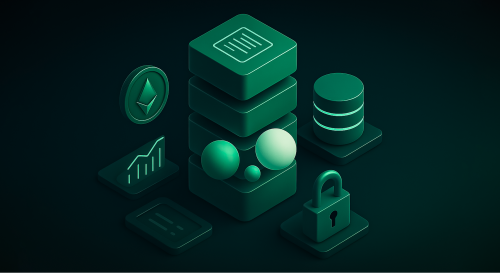Can you answer the question, “What are tokens for?” If your response only focuses on investment, you’re missing out on massive opportunity.
Tokens, like all money, act as incentives. That means founders like you can design your token strategy to shape your user behavior as they engage with your project.
But of course, tokens are also critical to raising capital and maintaining a treasury. In this article, I’m going to break down the various roles tokens play in Web3 user engagement and how they might apply to your project.
Introduction to Web3 tokens and their role in monetization
Imagine you are a music festival organizer. At a typical festival, attendees must purchase a ticket, receive a wristband designating their access level, and may be gifted a swag bag which might include merch and tokens for concessions.
That’s how tokens can function inside a Web3 project. Yes, a token may act as swappable (aka. fungible) value to purchase access to your project offering, just like regular currency. But your token could also provide exclusive access to unlock features, and even act as collectible.
We went deep on using tokens as initial monetization mechanisms in my recent ICO article, so we won’t be getting into that here. Instead, we’re unpacking the token swag bag for your users.
Understanding tokenization – fungible vs. non-fungible tokens
Let’s take a step back to review the basics. There is a critical difference between fungible and non-fungible tokens (NFTs). Each offers important utility for your project and together they give you tons of options. Here’s the breakdown.
Fungible tokens (FTs)
Fungible tokens function pretty much like regular money: one token equals one token. They use the ERC-20 protocol and were the OG tokens that started it all. Value-to-value, they equal each other. Using the music festival analogy, fungible tokens are the money an attendee is about to spend on their ticket. Until the ticket is purchased, money is just money and can be swapped for the same value with someone else.
Fungible is just a fancy word for ‘easily replaceable by an identical item.’ If I hand you a dollar and you hand me a dollar, we both still have a dollar. These are the tokens most often utilized in an initial coin offering (ICO). Investors want to someday be able to cash out without complication.
Non-fungible tokens (NFTs)
It’s likely you already have heard of NFTs, but may not know the meaning of the acronym. Non-fungible tokens are items that are unique — they can’t easily be swapped.
Some projects release NFTs as part of their launch strategy (we’ll get into that in a moment). At the time of their release, NFTs of the same value are probably easily swappable. For example, if I have a blue egg and you have a white egg, we can swap and we both still have eggs, but they’re different. If the market shifts and blue eggs suddenly become more desirable than white eggs, that difference makes one of our eggs far more valuable than another.
From a music festival standpoint, NFTs can be anything from the difference between GA and VIP tickets all the way to individual swag items. VIP tickets may be swappable before the event, but during and after, the VIP ticket becomes non-fungible based on how it was used (or which bands signed it).
What does minting mean in Web3?
To further clear the basics, minting means creating tokens. The name comes from traditional finance — governments ‘mint’ coins and currency which are released to circulation. This is done at a constant due to measurable damage that happens to existing currency to maintain a level saturation in the market.
You’ll have to think about this when you’re minting your own tokens. Minting naturally couples with burning, and while we don’t physically burn tokens these days (though some people like to burn physical FIAT bills), they may still need a natural attrition cycle to prevent oversaturation. You can learn more about all of this in our History of Tokenization article.
Airdropping – why and how Web3 projects use this strategy
Airdrops harken back to the activity of dropping food or supplies from overhead flights into warzones or closed borders. In crypto, the meaning is far more joyful.
Airdropping may pertain to fungible tokens or NFTs that are typically earmarked for early-stage participants.
Think of the crowds waiting in the ticket lines at music festivals. The first 100 in line may have slept overnight or traveled further to be there. Their efforts are recognized by the festival through free swag bags that include a tee shirt, bandana, and extra drink tickets. The festival goers always intended to attend, but they helped build early hype, so they got additional benefits.
Often, an airdrop involves participating in a project early on. Sometimes, however, it is just a method of engaging with your users. For example, I recently received an airdrop from r/datadao after uploading my Reddit data.
Regardless, airdrops are a great way to incentivize your user engagement.
Web3 marketing strategies – how tokens drive engagement
Tokens are incentives. They motivate your users depending on the interaction you’ve incentivised, including to buy, sell, hold, earn, or spend. So let’s have a look at how this could work at your music festival.
Token reward systems
The main stage at the festival is the furthest from the campground where all your attendees are staying. One of the incentives to travel to the main stage is to see the biggest acts at the festival. However, during the day, there are smaller acts performing on the main stage that attendees may not feel motivated to make the trek for.
How do we get attendees to visit the main stage so even smaller acts receive support? Advertise a bonus: “Take a selfie at the main stage and receive 10 drink tokens. Limit one per day.”
This incentive creates extra draw to the main stage but limits your liability.
In Web3, the Brave BAT token is a great example of reward tokens for user engagement. Brave knows you don’t prefer to see ads, but its how they make money. So they incentivize you to view the ads by giving you a cut.
Gamification
I constantly hear from users at UX testing events that they love gamification. Features like streaks, peak time avoidance incentives, points on a sliding scale that convert to tokens, and more, all go to excite users to stay engaged with your project.
I’ve loved being at music festivals that offer gamification like scavenger hunts, leaderboards, and daily challenges. I’ve also enjoyed being at conferences that do the same. Last year’s BananaConf NFT hunt was especially fun to witness as attendees were crawling over and under all kinds of obstacles to find the hidden treasure.
Gamification makes your users feel cared about. Just like a customized scavenger hunt can make a date feel extra romantic (“Gone Girl” notwithstanding), users feel paid additional attention to when you offer gamification to their engagement. I can’t recommend it enough.

Governance tokens
Governance tokens are a beautiful way to additionally engage your users. They are most iconic for their utility in DAOs (decentralized autonomous organizations), MakerDAO being a popular example, but that’s not where they stop!
Several DeFi projects, such as UNISWAP, utilize governance tokens to ask users about fee structures and proposed protocol updates (more on that in a moment). Gaming platforms like Axie use their governance token to involve users in game updates and treasury usage. And foundations use governance tokens to manage grant funds and upcoming scope.
A music festival might use a governance token to ask upcoming attendees to vote on the upcoming lineup, provide input about vendors, curate artists, and test the water about going plastic free.
Real-world examples of successful and unsuccessful token launches
Successful launches
- Speaking of UNISWAP, let’s take a look at their token launch in 2020. They airdropped 400 UNI as a ‘thank you’ to the early users who had already interacted with the platform. Those that got the tokens were just like those first 100 ticket buyers at the music festival. It worked because:
- There was no paywall
- Trust had already been built through early engagement
- Arbitrum launched their ARB token in 2023 as part of their governance rollout. This launched their DAO to early users. This token is similar to one that would give festival-goers a vote on the proposed lineup and vendors. It worked because:
- There was transparent engagement criteria
- Community-focused framework
Unsuccessful launches
- BitConnect launched a high-promise token in 2016 via ICO. Soon after, things went sideways. The token crashed in 2018 and a ponzi scheme was revealed, resulting in an SEC indictment in 2021. What went wrong:
- A classic ponzi scheme was masked under token hype (lack of transparency)
- No token utility was offered
- The Internet Computer (ICP) launch also went sideways, but for different reasons. The token launched brilliantly, but like a rocket with a faulty engine, the flight soon failed and 90% of its value was lost. Here’s what went wrong:
- Poor tokenomics (aka faulty engines)
- Lack of clarity surrounding utility (little incentive to hold)
The key takeaways from these launches should be transparency and good token economics. Without both, you risk your reputation and the wallets of those users that trust you.
Monetization beyond tokens – hybrid models for Web3 apps
Web3 used to be an insular world. Blockchain services were only to be had within the ecosystem, no “traditional” options allowed. Today, crypto companies are blending their services with Web2, and old-school companies are experimenting with Web3. If you’re considering rolling out a music festival (ahem, a Web3 project), there are several tried and true monetization pathways that can benefit your roadmap.
- Freemium models: How many apps on your phone are ‘free’ with paid services inside? I’ve lost count on mine. Why are there so many? It works. Freemium is like taste testing ice cream at a music festival vendor. Once you find your flavor, you’re going to want more.
The project Zapper does just this: it’s a free DeFi dashboard that offers deeper insights into one’s portfolio. Customers must connect their wallets to get those insights, after which it’s just one simple step to monetization via their premium advanced analytics. - Subscription services: Subscriptions are all the rage today. Be careful how you use them — the market is experiencing some fatigue regarding subscriptions. However, they provide a predictable path to monetization for Web3 projects.
Give your users enough value for their subscription and they’ll happily keep paying you. For example, a festival might offer a subscription to their fan club which includes side events throughout the year. If you’re keen on providing subscriptions, check out Unlock Protocol, which provides the smart contracts necessary for you to build blockchain subscriptions for your project.
Some examples include premium Discord channels, beefy newsletters that deliver tons of value to your niche, or a meetup event model. - Tokenized assets: NFTs offer massive utility for monetization as they can represent just about any unique asset. At festivals, NFTs might represent anything from gated VIP access to bonus vendors to swag bags. In Web3, RealT is using NFTs to manage real estate assets and dividend rights. Theirs is a great example of how NFTs can provide fractional access to a whole opportunity, lowering the barrier to entry for your users.
There are many ways to monetize a Web3 project these days. And thank goodness, for it means that you can tailor your offering to exactly what your target market will love.
Let’s have a look at what that might look like via consumer apps. You’ll get an understanding of not only how to market dApps, but how to make your Web3 marketing plan sticky, so customers stay for the long term. Hit that arrow below when you’re ready.



